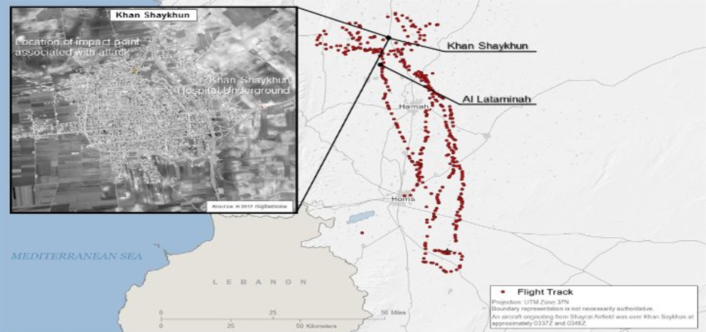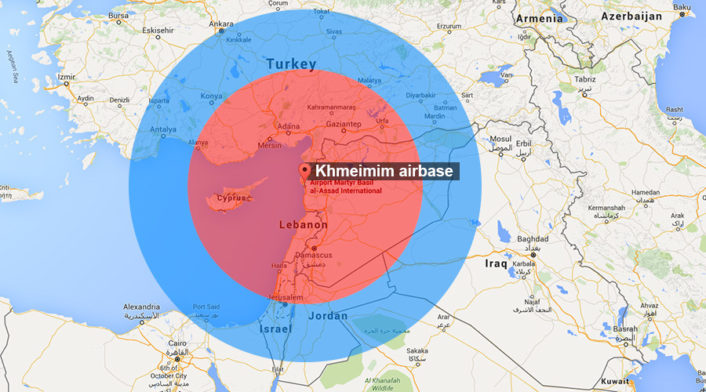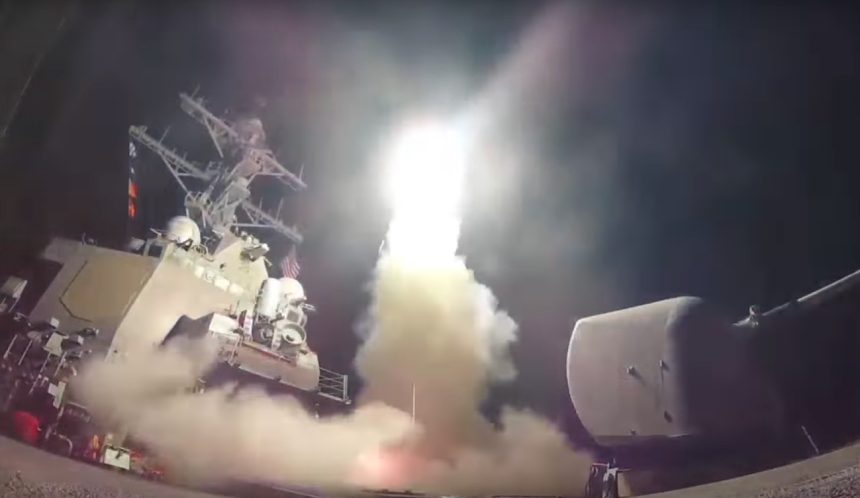Two U.S. destroyers cruising in the eastern Mediterranean Sea have fired 59 BGM-109 Tomahawk Land Attack Missiles at an airbase in western Syria. The cruise missiles flew across the Russian S-400 MEZ unscathed.
Last night, Alreigh Burke-class destroyers USS Porter (DDG-78) and USS Ross (DDG-71) launched cruise missiles into Syria, in response to the chemical weapons attack that killed dozens of civilians on Apr. 4.
On President Donald Trump’s order, 59 BGM-109 Tomahawk Land Attack Missiles (TLAMs) targeted runway, hardened aircraft shelters, ammunition supply bunkers, air defense systems, radars and fuel points at Shayrat Airbase, the airfield in western Syria from where, according to the intelligence gathered by the U.S., the aircraft that carried out the chemical attacks were launched

According to the first reports, all the aircraft based there have been destroyed or severely damaged, including some 30 Syrian Arab Air Force Su-22 Fitter attack planes, several SyAAF MiG-23s and also some Su-24 Fencers according to sources. For sure, considered the status of Assad’s air force, the attack may have had a significant impact on the ability of the loyalist air force to conduct air strikes.
However, later reports say that most of the aircraft based there were evacuated before the strike, and initial footage from Shayrat seems to show at least some areas of the airports, including taxiways, shelters, aprons, etc. with little or no damages.
Update:
Only 23 missiles flew to the Syrian air base and just 6 MiG-23s were destroyed there along with a radar station, spokesman for the Russian Defense Ministry, Major-General Igor Konashenkov, said at a briefing. Where the remaining 36 cruise missiles have landed is “unknown,” he said.
According to Pentagon, the Russians were informed ahead of strike:
Russian forces were notified in advance of the strike using the established deconfliction line. U.S. military planners took precautions to minimize risk to Russian or Syrian personnel located at the airfield.
Indeed, Shayrat Airbase is a Forward Operating Base for a few Russian Air Force Mi-35 and Ka-52 helicopters. The status of the choppers, provided some of these were there at the moment of the air strike, is unknown. However, considered that these are not mentioned in the Russian Defense Ministry statement it’s safe to assume they were not damaged by the TLAM attack.
#Sharyat AB which was targeted by the #USNavy today was a main fwd operating base of #Russia|n Air Force Mi-24/35 & Ka-52 in #Syria https://t.co/pnhzrTQyzc
— Babak Taghvaee (@BabakTaghvaee) April 7, 2017
Noteworthy, the TLAMs flew across the MEZ (Missile Engagement Zone) of the S-400 missile battery the Russians deployed to Latakia to protect the Russian air contingent deployed there in 2015.
Did Russia’s most advanced anti-aircraft defense system detect the missiles? For sure there are no reports of any of the BGM-109 intercepted by the S-400.
Designated SA-21 “Growler” by NATO, the S-400 is believed to be able to engage all types of aerial targets including aircraft (someone says even VLO – Very Low Observable ones), drones and ballistic and cruise missiles within the range of 250 miles at an altitude of nearly 19 miles. Equipped with 3 different types of missiles and an acquisition radar capable of tracking up to 300 targets within the range of over 370 miles, the Triumph (or Triumf) is a system made of 8 launchers and a control station.
Supported by effective EW (Electronic Warfare) capabilities, the S-400 fires missiles against aerial targets flying at 17,000 km/h.
So, at least on paper, all non-stealth aircraft and missiles would hardly be able to dodge S-400 missiles. Assuming that the Russians probably detected at least some of the Tomahawks flying fast and low towards their targets at Shayrat Airbase it’s not clear why the Trimf did not attempt to intercept any of the TLAMs launched by the US destroyers, considered the reaction by Viktor Ozerov, head of the Russian Federation Council’s defense committee, who said the American attack was “an act of aggression against a UN member […] Cooperation between the Russian and US militaries may be shut down after the US strike.” according to state news agency RIA.
Perhaps, considered that they were informed beforehand, they simply decided to let them pass. The Russian MoD statement does not say mention any Russian air defense system intercepting any of the U.S. missiles launched towards Shayrat Airbase even though some sources have suggested only 23 missiles reached their targets because the other ones were brought down near Tartous by the local S-400 and S-300 batteries.

Anyway, the U.S. TLAM strike marks a shift in Washington’s posture regarding Syria and it represents the first direct action against Assad’s regime after six years of civil war.
Back in 2013, when a U.S. military operation in Syria was being rumored, we published an article that you can read here. Here are some key points of that story, that still apply four years later:
“Forget F-15E Strike Eagles and F/A-18E Super Hornets carrying PGMs (Precision Guided Munitions). Should Washington really get involved in Syria, it will probably be a limited air war, mainly made of cruise missiles, most (if not all) shot by warships or submarines and almost no involvement of “tacair” (tactical airplanes).
[…]
The attack would be conducted by the four destroyers in the Sixth fleet area of operations (USS Gravely, USS Barry, USS Mahan and USS Ramage) [in 2013 these were operating in the eastern Mediterranea], each theoretically capable to launch up to 90 Tomahawks Tactical Cruise Missiles (actually less, because these warships usually carry a mix of attack and air defense missiles).
High flying Global Hawk drones flying from Incirlik, Sigonella or Al Dhafra, will perform the post-strike BDA (Battle Damage Assessment). Some sorties will also be flown by U-2s.”
At that time a real air campaign was thought to be considered. The one carried out in the night between Apr. 6 and 7 was probably an isolated air strike in retaliation for the Syrian chemical strikes earlier this week.









